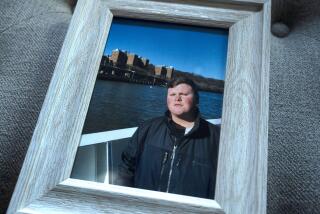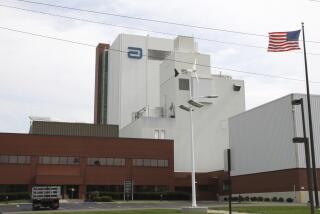Tylenol Probe Shifts to Time of Delivery
- Share via
WASHINGTON — Food and Drug Administration officials said Sunday that agency investigators are trying to find out when the second bottle of poisoned Tylenol was delivered to the Woolworth’s store in Bronxville, N.Y., where it was discovered by federal authorities last Thursday.
“We are trying to determine the ‘window of opportunity’ available to an outsider for tampering,” FDA Deputy Commissioner John Norris told The Times. “That would be time between the date of delivery to store and the date we picked it up. What we’ll know is the maximum time someone could have bought it and brought it back, although we won’t know how long he kept it.”
FDA investigators still are operating on the theory that the Tylenol poisonings were “purely local.”
Norris called the Bronxville Woolworth’s “a small store with a small delivery size of Tylenol--only about six bottles” and described Tylenol as “a fast-moving product with rapid turnover.” He indicated that knowing when the bottle was first delivered to the store could provide more information about whether the bottle had been sold from the Woolworth’s, then contaminated with cyanide and returned to the same store shelf.
Westchester County Executive Andrew P. O’Rourke, lending credence to that assumption, said Sunday that the contaminated bottle found at the Woolworth store had come from a different lot than the rest of the bottles found on the store shelf.
“This particular package in the Woolworth’s had a different number than the rest of the packages in that same store,” O’Rourke said, appearing on ABC-TV’s “This Week With David Brinkley.”
‘Reverse Shoplifting’
“That would appear to be reverse shoplifting,” O’Rourke said. “Somebody came in and actually put it on the shelf.”
Norris confirmed that the bottle came from a different lot but said: “There’s no information to suggest that this bottle was not delivered to the Woolworth’s store in the normal course of business.”
Another federal source close to the investigation said: “It was the only one of that lot number on the shelf. It was unique enough that it would suggest that it might have been planted there.”
Authorities found the bottle with five cyanide-contaminated capsules less than two blocks from the Bronxville A&P; supermarket that sold the bottle of Extra-Strength Tylenol with the capsule that killed Diane Elsroth, a 23-year-old stenographer. Elsroth died Feb. 8 in the Yonkers, N.Y., home of her boyfriend.
After the second bottle was found, analysis at the FDA’s Cincinnati laboratory confirmed that the cyanide from both bottles was chemically identical and could have been in the capsules for several months.
Johnson & Johnson, Tylenol’s manufacturer, said the lot number of the Tylenol involved in Elsroth’s death was ADF916 and was manufactured May 17, 1985, in Fort Washington, Pa. The second container, lot number AHA090, was produced July 17, 1985, in the company’s Puerto Rico plant.
Federal authorities said the tamper-resistant packaging--designed for consumer protection after seven people died from ingesting cyanide-laced Tylenol in the Chicago area nearly four years ago--appeared untouched on the second bottle.
Johnson & Johnson Chairman James E. Burke, also appearing on ABC, discounted the possibility that the bottles could have been tampered with at the company’s distribution facility in Pennsylvania, where both bottles were processed two weeks apart.
“Even if you could tamper at the distribution center,” he said, the culprit would have to deal with the individual bottle’s seals. Moreover, Burke said, the individually sealed bottles are “packaged in six-packs, elaborately wrapped in plastic, and they’re packed in a case. You’d have to get through an awful lot of material.”
Burke said the products were then shipped to an A&P; distribution center, which serves 38 states, and a Woolworth’s distribution center, which serves 26 states.
FDA Commissioner Frank E. Young, asked on ABC how the tamper-resistant packaging could be penetrated, said: “It sounds like it’s much more of a professional-type job.”
More to Read
Sign up for Essential California
The most important California stories and recommendations in your inbox every morning.
You may occasionally receive promotional content from the Los Angeles Times.










